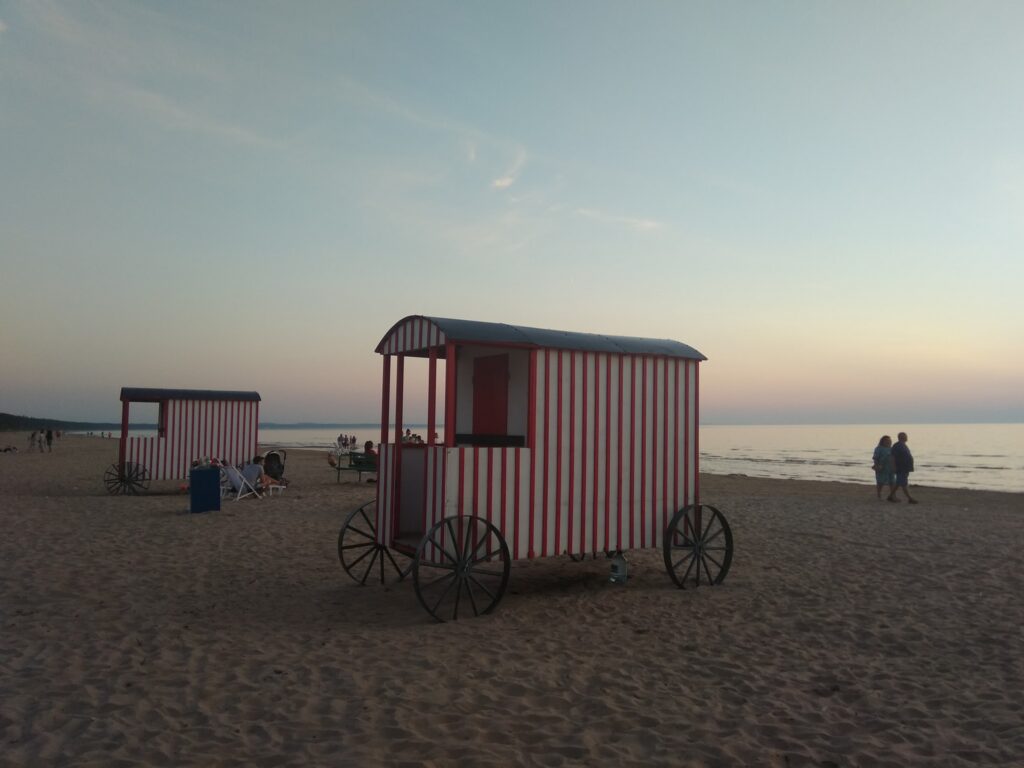Slanting industry sunset: how fair can the transition be?

For the century, combustible shale remained the energy anchor of Estonia. Until recently, it provided up to 90% of all electricity of the country, especially in Ida-Virumaa, where it became not just a resource, but the basis of life. “We are talking not only about energy, but about the whole social structure that arose around this industry,” emphasizes Professor Monica Hulkort, which explores the consequences of energy transformations.
Halkort lectures on applied humanitarian law at Vienna University. In Estonia, she was attracted by shale energy as a model in miniature. She spent a lot of time in Ida-Virumaa. “Those processes that we today observe in the northeast of Estonia are also characteristic of the rest of Europe, here, in some way, they are expressed brighter, more contour and noticeable. Both at the economic and social level, ”said Hulkort in a conversation with the Narva Gazeta.
The era of shale ends. Under the pressure of the EU growing carbon taxes and ecological requirements, the country intends to abandon Sleeps by 2035. This decision causes conflicting feelings – from the joy of ecologists to anxiety in the eyes of the inhabitants of mining cities. The question is now not whether a refusal is needed, but how fair it will be.
History briefly: a century underground
The industrial production of shales in Estonia began in 1916 and survived the rapid growth in the 20th century. From Soviet times, until the beginning of the 2000s, the industry provided thousands of jobs and half the budget of the region. However, since the 2010s, production and processing lose profitability. The crisis of 2019 was especially noticeable, when, due to the increase in the price of quotas on CO₂, hundreds of people lost their jobs.

Shteta is one of the most dirty fuels. Its burning gives Co₂ emissions higher than that of coal. And the waste – ash and alkaline drains – accumulate in such volumes that real mountains from the ash grew in the vicinity of Narva. “Slender energy leaves behind not only a landscape resembling a moon, but also complex consequences for health and ecosystems,” explains Halkort.
At the same time, Estonia makes efforts to reduce damage. On the site of the ashes, wind farms are built, technologies for cleaning and secondary recycling of ash are being introduced. But the elimination of the consequences of decades of prey is not a matter of several years.
People after Slantsy: invisible transition price
“Talking about a fair transition means talking not only about a new job, but also about recognition of the past,” Professor Halkort emphasizes. For thousands of people, work in the mine was more than employment. It was a source of pride, stability, social status.
“He occupied an empty summer cottage, where he gathered a simple dwelling from construction garbage – he even has a small bath and a tiny hut.
After the closing of production, many were in a vulnerable position. “Yes, they were offered a job, but in fact – these are vacancies for a minimum salary. They were employed in the reports, and in fact – they replaced the real profession with a checkmark in Excel, ”the researcher says. She recalls how former employees of the Krenholm Manufactory were invited to art-password in the territory of historical factories: “It was almost a spit in the face-the building where you worked all your life, has become a scene for someone else’s performance.”
Locals confirm: despite investments, the feeling of loss remains. The mayor of Narva-YESUSUU Maxim Ilyin openly says that he supports a green transition, but only on condition that he will not leave people without work and budgets without revenues. “Glutz gives taxes. They need to be replaced with something. But just close is not an option, ”he explains.
In Ida-Viruma, unemployment is twice as high as in the country. Many leave the region. Those who stay feel that their opinion is not taken into account. “All this policy is about ecology, about numbers, about the green economy. And about what the miner or engineer feels, is silence, ”adds Hullcort.
Abandoned villages: Sirgala and Viivikonna
Sirgala and Viivikonn-two villages in Ida-Virumaa, which became symbols of the decline of the shale era. Once they were prosperous mining settlements, but with the closure of the mines were practically abandoned and turned into real ghost cities.
A resident of Sirgala Yuri says: “It’s time to put a barrier and collect money from the arrivals. Everyone who is not laziness is shaking. Drivelings fly. Training training on cars is arranged. Now it will become quieter how snow will fall – we are resting in winter. And in the summer, especially on weekends, problems. Whoever looks like, look, and who will pog. There are all these broken glass, doors – all visitors. And it is useless to call the police – they do not have time to come. ”
After the municipal reform carried out in Estonia in the last decade, Sirgal and Viiviconn were subordinated to the municipality of Narva-Yesuu. To date, several dozen people still remain here. One of the local residents refuses to leave their own home, despite the fact that the « abandonment » around, in winter, it is necessary to resolve the issue with the heating of the dwelling.
But, oddly enough, new inhabitants appear here. Tyu came to Sirgala three years ago from Central Estonia. “I left the apartment to my brother – he has a wife and children, he needs it, and I myself settled here,” says Tyna.

He occupied an empty summer cottage, where he gathered a simple dwelling from construction debris – he even has a small bath and a tiny hut in which he lives in winter. He exists for a small disability pension, the bus to Sirgala from Sillavye is still going – he gets out there once a week to the store.
“It is very quiet and calm here, no one cares about me, no one is trying to teach me how to live,” the voluntary resettler emphasizes. In his history there is something about leaving civilization-he does not use the Internet, he has an old button phone, but he does not remember his number. He will learn the news with a home -made radio.
“In the summer I am enclosing, I have several fruit gardens here, there are more lands here more than to be processed, so life is arguing. In winter, I am engaged in repair, I read books, ”says Tyna.
Apparently, Tyn decided to settle in Sirgala seriously. At the same time, it is extremely clear that these villages will never be stolen and such Tyu can be their last inhabitants. The efforts of residents to move the residents to more accommodated settlements borrowed by the Narva-Yesu, and natural decline plays a role.
Transition: What are hopes for
In order to soften the consequences of the long -term development of the shale, the EU allocated Estonia to more than 340 million euros through the Founding Fund. All funds go to Ida-Virumaa-this is an unprecedented step. Funds are directed to retraining, the development of small businesses, industrial parks.
“The mayor with whom we spoke was optimistic. He wants not to lose the region, to prevent him from dying after the departure of the shale. This is not romance, but pragmatism, ”says Professor Hulkort. Among the key projects are the construction of a factory for the production of magnets for wind generators and electric vehicles, the development of wind energy, ash processing. But the success of these initiatives depends not only on investment.
“We cannot perceive a person as another type of fuel. You cannot support people according to the same logic as the production of shale – they say, they removed energy and forgot. This is the very mistake of thinking that we must overcome, ”says Monica Hulkort. In her opinion, a “fair transition” is primarily a conversation with people: about recognition, about the pain of loss, about the future where they feel necessary.
Political view: between strategy and reality
The former Prime Minister Kaya Kallas at one time emphasized the need for an honest dialogue with the population: “We must look into the eyes of people and honestly say: Sleeper has no future.” She also noted that a fair transition would increase the confidence of the inhabitants of Ida-Virumaa and improve access to well-paid jobs.
According to the last voiced plans of the government, we will find a complete rejection of the shale in 10 years, and if for politicians such a plan sounds pragmatic and understandable, then how this refusal will be realized, so far they say only the most common phrases.
The story of Slantsy is not only about economics and ecology. This is about cities and families that lived with this fuel. The rejection of him is inevitable. But if this path is passed without respect for people, it will become another injury. “The transition will be fair only when we will see a person for industrial statistics,” concludes Hulkort.
At stake is not just energy, but trust. Ida-Virumaa should not disappear with the shale, but be reborn thanks to new energy-in the literal and figurative sense.
The Post Slanting industry sunset: how fair can the transition be? FIRST Appeared on gazeta.ee.






:format(webp)/s3/static.nrc.nl/images/gn4/stripped/data133314127-765aec.jpg)
